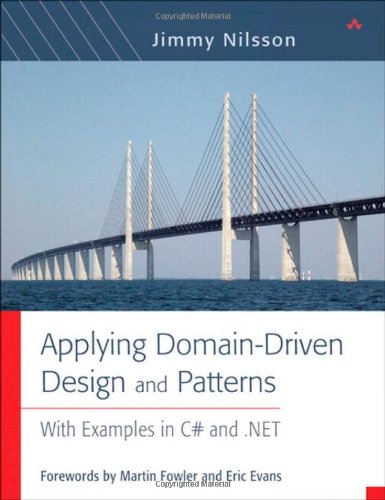Applying Domain-Driven Design and Patterns: With Examples in C# and .NET book
Par nawrocki amy le samedi, février 25 2017, 05:11 - Lien permanent
Applying Domain-Driven Design and Patterns: With Examples in C# and .NET. Jimmy Nilsson

Applying.Domain.Driven.Design.and.Patterns.With.Examples.in.C.and.NET.pdf
ISBN: 0321268202,9780321268204 | 576 pages | 15 Mb

Applying Domain-Driven Design and Patterns: With Examples in C# and .NET Jimmy Nilsson
Publisher: Addison-Wesley Professional
The framework provides powerful formatting capabilities, but the syntax is confusing and there are some tricks. I had a chance this weekend to start reading Jimmy Nilsson's new book, called Applying Domain-Driven Design and Patterns With Examples in C# and .NET. Currently I have read through Chapter 8. We're currently considering whether it makes sense (or if the benefits are worth the added code) to introduce a Message based pattern (such as Request Response) into a Domain Driven Design / Service Oriented There are Application Services, and Domain Services and the application service might use multiple domain services to e.g. Examples of N-Tier design with Rich Domain Model. You need help with DateTime formatting strings in C# or .NET languages. Here we see examples of using DateTime Format string pattern === MMM display three-letter month ddd display three-letter day of the WEEK d display day of the MONTH HH display two-digit hours on 24-hour scale mm display two-digit minutes yyyy display four-digit year. C# 3.0 Features: Object Initializers. C# 3.0 is just around the corner so I thought I'd start writing about a few of the features that it exposes and provide quick and concise examples of how they can be used. Save something and then send an email about the item being saved.